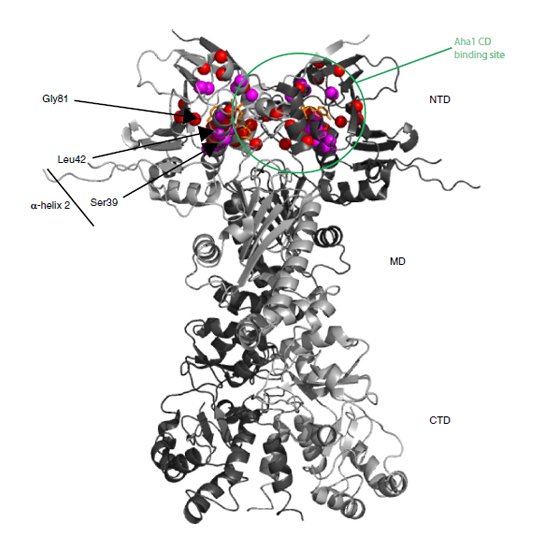A chemical compound inhibiting the Aha1-Hsp90 chaperone complex
28-Aug-2017
J. Biol. Chem., (2017) 292(41), 17073–17083, DOI 10.1074/jbc.M117.797829
J. Biol. Chem., online article
The eukaryotic Hsp90 chaperone machinery comprises many co-chaperones and regulates the conformation of hundreds of cytosolic client proteins. Therefore, it is not surprising that the Hsp90 machinery has become an attractive therapeutic target for diseases such as cancer. The compounds used so far to target this machinery affect the entire Hsp90 system. However, it would be desirable to achieve a more selective targeting of Hsp90-co-chaperone complexes. To test this concept, in this-proof-of-principle study, we screened for modulators of the interaction between Hsp90 and its co-chaperone Aha1, which accelerates Hsp90's ATPase activity. A FRET-based assay that monitored Aha1 binding to Hsp90 enabled identification of several chemical compounds modulating the effect of Aha1 on Hsp90 activity. We found that one of these inhibitors can abrogate the Aha1-induced ATPase stimulation of Hsp90 without significantly affecting Hsp90 ATPase activity in the absence of Aha1. NMR spectroscopy revealed that this inhibitory compound binds the N-terminal domain of Hsp90 close to its ATP-binding site and overlapping with a transient Aha1-interaction site. We also noted that this inhibitor does not dissociate the Aha1-Hsp90 complex but prevents the specific interaction with the N-terminal domain of Hsp90 required for catalysis. In consequence, the inhibitor affected the activation and processing of Hsp90-Aha1-dependent client proteins in vivo. We conclude that it is possible to abrogate a specific co-chaperone function of Hsp90 without inhibiting the entire Hsp90 machinery. This concept may also hold true for other co-chaperones of Hsp90.











